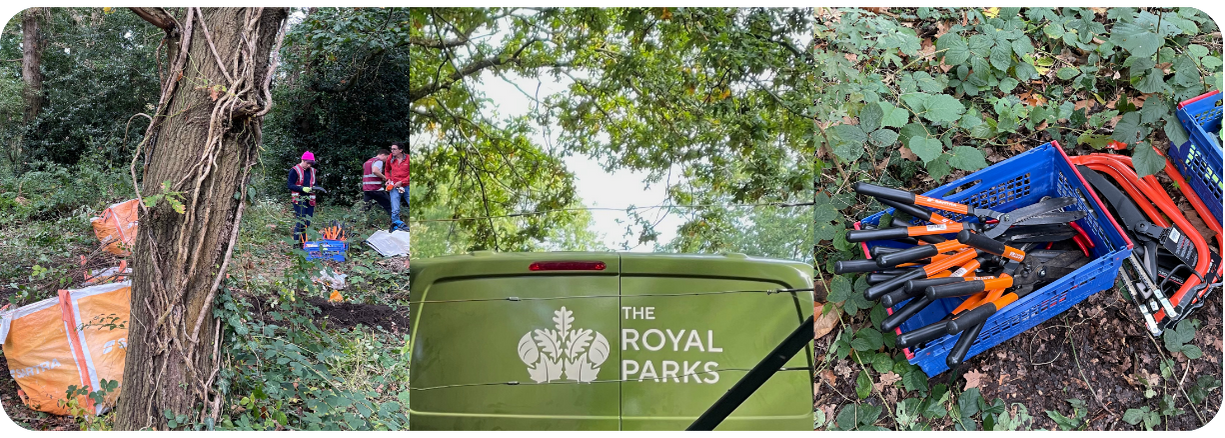Edgefolio’s marketing associate, Amelia Wilkinson, shares her experience volunteering with The Royal Parks.
Have you ever stopped to think about how your local parks are maintained? There’s often a lot more going on behind the scenes than meets the eye. The Royal Parks charity is responsible for taking care of London’s ‘Eight Royal Parks’, which span across 5,000 acres of open parkland in the city. These iconic parks are Hyde Park, Green Park, Richmond Park, Greenwich Park, St. James’s Park, Bushy Park, Regent’s Park, and Kensington Gardens. These green spaces offer Londoners a chance to escape the hustle and bustle of the city and reconnect with nature – for free, too. The Royal Parks charity plays a crucial role in ensuring these historic spaces remain not only healthy, but accessible for future generations.
With millions of visitors each year, the Royal Parks’ responsibilities extend further than one may initially think. One of the ways the charity keeps the parks in good condition is through volunteering, both on a recurring and one-off basis – depending on the project. (Make an account to check them out here!). Supported by volunteer officers, volunteers can contribute to the well-being of the parks in a variety of hands-on ways, and I recently had the opportunity to take part. This particular session was focused on plantation management in Richmond Park, a park renowned for its vast size and population of deer.

The group I was in tackled tasks like controlling the spread of invasive plant species. One of the main challenges was cutting back cherry laurel and snowberry, two aggressive yet undeniably beautiful shrubs that, if left unchecked, can easily outcompete native plants. We also removed rogue sycamore saplings that had sprung up in areas where they weren’t meant to grow. These activities are part of the park’s broader management plan to maintain the park’s natural equilibrium.
What’s great about these volunteer sessions is that all the tools and equipment are provided, so you can jump right into the work without needing to bring anything. Even though the tasks might seem small in the grand scheme of things, there’s something incredibly satisfying about seeing the immediate impact of your efforts. There’s a great sense of fulfilment in knowing that you’ve contributed to the well-being of a green space that can be enjoyed by people and, most importantly, local wildlife.
Living in a busy metropolis like London, it can be easy to feel disconnected from the natural world. Eco-volunteering in any capacity is a great way to contribute to the longevity of the city’s green spaces. We all have the power to help make our surroundings more sustainable. On your next visit to one of London’s Royal Parks, take a moment to acknowledge the unseen efforts that keep these spaces flourishing. Plus, if you’re looking for a way to weave conservation into your everyday life, consider joining one of their volunteering sessions.